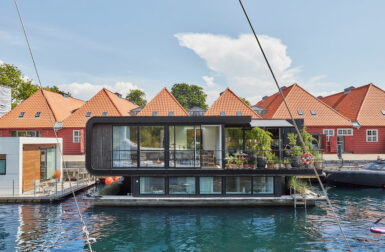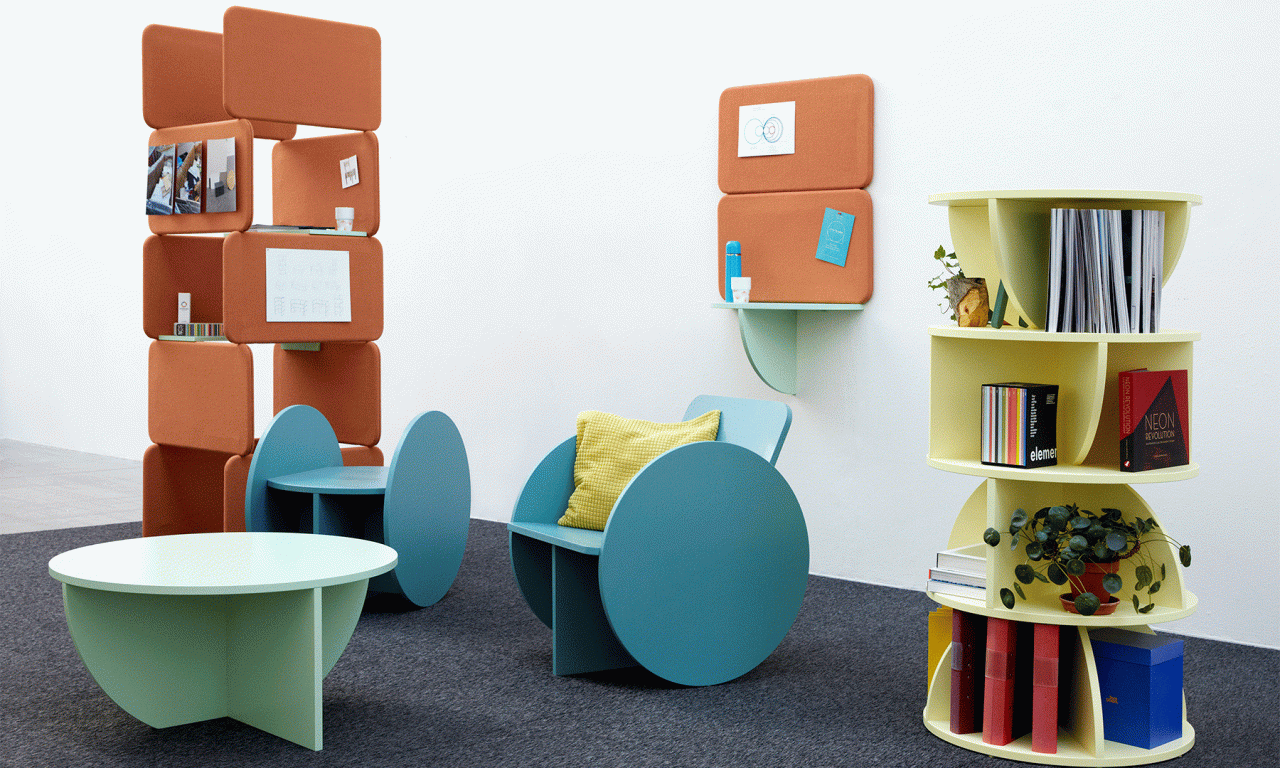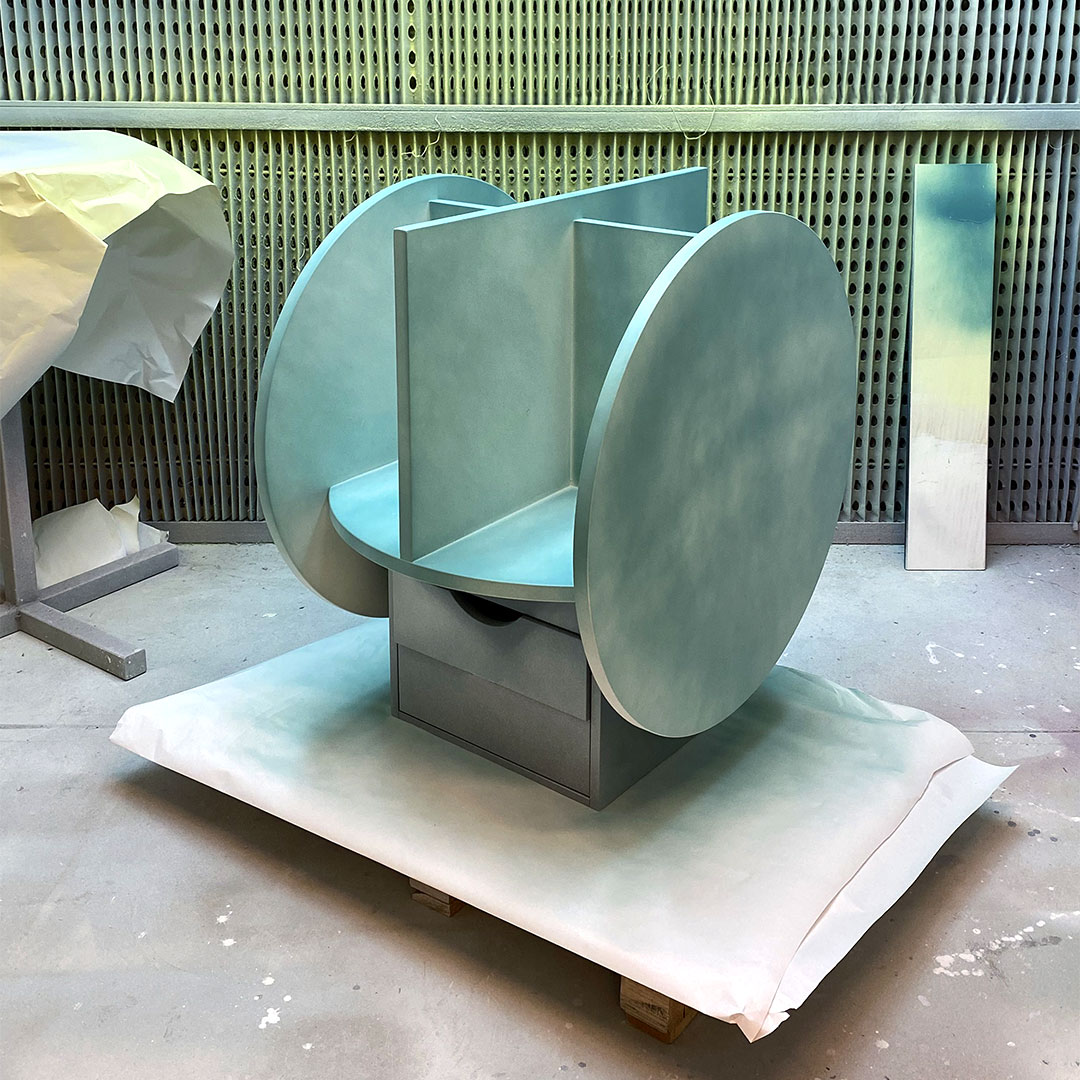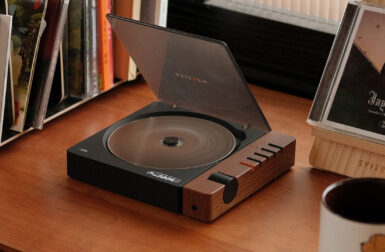Stockholm-based product and interior designer Daniel Svahn established his eponymous studio after graduating from Beckmans Collage of Design in 2009 with a BFA in product design. Crediting his inspiration to the everyday things we see all around us – whether ‘small or big, relevant or irrelevant, nice or ugly,’ he feels anything can be made into something new if you’re observant enough and keep your imagination awake. True to his word, A New Paradigm – an evolution of the New Goodies but Oldies project he presented at the 2020 Stockholm Furniture Fair – is a collection of six pieces of contract furniture made from furniture discarded by the same sector.
Tell me a little bit about your childhood, education, and background in terms of how you first became interested in creativity, design, and sustainability.
I come from a typical Swedish working-class home. My parents had non-creative jobs but were creative anyway. Dad liked to paint and create sculptures for our backyard and mom would constantly reimagine our home, making countless hand-drawn floorplans. That was my first encounter with interior design, spatial contexts, and art. I, too, created a lot as a child and young adolescent, but it wasn’t until my early 20s that I started to think about pursuing a creative career. Funnily enough, my interest in design, furniture, and interiors started after I got a job at IKEA – I was exposed to such a range of furniture and interior products and my interest grew, but it was also a reality check as I learned more about industrial-scale production and the impacts of our contemporary lifestyles – something that has stayed with me ever since. But it was actually a supervisor at IKEA – Pernilla – who urged me to apply to art school. I studied painting, photography, sculpting, design, and installation art at various preparatory schools, before taking my BFA in product design. And now, after almost ten years of working freelance and teaching, I have just completed a Master’s in spatial design at Konstfack University of Arts, Crafts and Design in Stockholm. I used this time to experiment with concepts around sustainability – an opportunity I am incredibly grateful for.
How would you describe your projects: A New Paradigm and New Goodies but Oldies?
They are both all about material reuse and upcycling – and are also a commentary on the production industry, ‘wear and tear’ consumption, and a common, widespread disrespect for material. They argue for material reuse and upcycling as part of any new production. They are projects that enable me to experiment, educate, and show the potential material can have if it is allowed to live out its full lifecycle. Even if a product is old, broken, or obsolete, the material in it still has so much more to give.
What inspired these projects?
During my Master’s, we had a course around ‘degrowth’ [the notion of living meaningfully, enjoying simple pleasures, and intentionally slowing things down in order to minimize harm to people and planet] and how we, as the interior architects and designers of the future, could adopt it in our creative practices. My work came to be about material waste from furniture and how we can and need to tend to ‘old’ material. It is absurd how much fine, already extracted and produced, material is being wasted after its first lifecycle, instead of being put to new use – because it’s cheaper and easier to buy or make new. But things are changing. In Sweden, this work is being led by a handful of companies and initiatives, but they often lack the creative and aesthetic sense in problem-solving and that’s where designers come in. We all need to work together – designers, architects, the industry, clients, consumers, and people in general – if we are going to shift to a more sustainable and circular way of thinking in most of our dealings in life.
What waste materials are your products made from, how did you select those particular materials, and how do you source them?
I focused on the furniture and material waste from the public sector and contract markets since those are the fields I work most in. Waste is a particular problem within the governmental sector, where laws and regulations are strict around public procurement, but not when it comes to getting rid of furniture deemed as old, broken, or obsolete. Most often, these items are just thrown away. However, in Sweden, we now have a handful of fantastic professional companies working on a large scale with reuse, upcycling, and reconditioning of furniture from that area and it is a growing field. Today such companies can recondition old furniture into near new. Interior architects can, therefore, provide more circular, sustainable, and better alternatives for new projects, instead of always selecting newly produced ones. But not all products or materials are easy to process that’s where my ideas come in. I have been working with Recycling Partner (RP) and Rekomo, to learn about the problem articles, such as laminated pieces and obsolete furniture typologies, that they have a hard time with and risk throwing away themselves. These products and materials are hard to recondition for new interior projects. When I suggested that I would try to create new things with this material, these companies bought into the idea straight away and gave me the material I wanted since it was waste for them anyway. It became a win-win situation towards a common goal of material reuse and upcycling.
When did you first become interested in using waste as raw material and what motivated this decision?
I have always used old or found materials in prototypes and even in final designs. The concerns around material waste have also been with me for a long time and I have been playing with different ideas of how I can create new things from old for years. It has been craft-, art-, and product-orientated and all of these ideas and trials have led me to where I am now. Learning from, and being inspired by ‘degrowth’, the United Nation’s Sustainable Development Goals, and all amazing people and companies who push the sustainability agenda really drives me to push myself to find ways that I, within my field of expertise, can contribute to our common goals and a more sustainable and better future.
What processes does the waste material have to undergo to become the finished product?
They have not undergone too much processing at all – and actually that has been a guiding principle for me in the process, to not make too many or overcomplicated incisions into the material, but rather to see how far I can stretch it by doing as little as possible. Guided by the material, as a sort of collaborative partner in the design process, its pre-set appearance and with few cuts and simple joinery, I have tried to generate interesting and unique pieces of furniture. Both to push myself in my design creativity, but also to further justify working with reuse and upcycling by keeping hours and costs down, so it will not be more expensive in the end than buying new. When my pieces are finally done and put together, it just takes some sanding, a little tender loving care, and a coat of paint to make them look like all-new pieces that are not obviously upcycled. I think it is increasingly important in the justification of reuse as ‘the new production’ for the finished products to look new.
How did you feel the first time you saw the transformation from waste material to product/prototype?
Joy – and excitement of course! When you can really see what you can create from waste and how simple the process can be, it’s a pretty good feeling.
What happens to the products at the end of their lives? Can they go back into the circular economy again?
Sure. Since I have done minimal work cutting the pieces and connecting them with wooden pegs and glue, you can knock them apart and treat the material the same way again for new purposes and designs. If you would like to, that is. A bit of touching up, sanding, and adding new colors to it and you have a whole new product or object that allows the material to live as long as possible, regardless of the original intent.
How have people reacted to these projects?
Reactions have been very positive. You can tell that people and the industry are taking sustainability much more seriously now. In the specific field of material reuse and upcycling, I can also see a greater interest, especially for new ideas dealing with some of the more problematic waste streams – we cannot have too few of them. A nice and funny anecdote from this past February when I showcased my project The New Goodies but Oldies at the Stockholm Furniture Fair is that some architects told me that it probably was the best show at the fair and that they were ‘upset’ they hadn’t come up with the idea themselves! They said it was a breath of fresh air, apart from the rest of the ‘fluff’ at the fair, and that it gave them hope for the future. How could I argue with that? It just fueled my ambition and set me on my path for the work with the A New Paradigm project, and all that may follow.
How do you feel opinions towards waste as a raw material are changing?
Eyes and minds are slowly being opened. Climate change, the depleting of our natural resources, and overproduction have made people more aware of the effects we have on nature and their consequences, but it needs to spread even further. On a municipal and professional reconditioning level, the interest in developing these types of ideas is spreading, even into the world of politics. That is when we really can start to generate change and create new laws and legislations to simplify the usage of material reuse and upcycling to a greater extent throughout society. If we can create new products, out of the supposed ‘waste’, that look and behave like new, I cannot see a reason why not. By working with and addressing the industry and political sphere first to generate change, I believe it will be easier to spread the ideas to the rest of society later – or better yet, in parallel.
What do you think the future holds for waste as a raw material?
I think it holds great potential, but we need to develop more, new and smart ways of tending to all the kinds of waste we already have and, ultimately, stop generating more. There are already a lot of examples of this from new plastic products created of salvaged plastic waste from the oceans to the use of food waste for both coloring and new materials and the development of various kinds of composite materials. The problem with some of these though is that they may be hard to recycle when they are created, so it is not only about how we make things but also what happens to them at the end of their lives. Even if waste and the reuse and upcycling of it becomes the new method of production, we still need to rethink our consumerist ‘wear and tear’ ways and create things we really need and that will last for a really long time. Longevity is key.


































